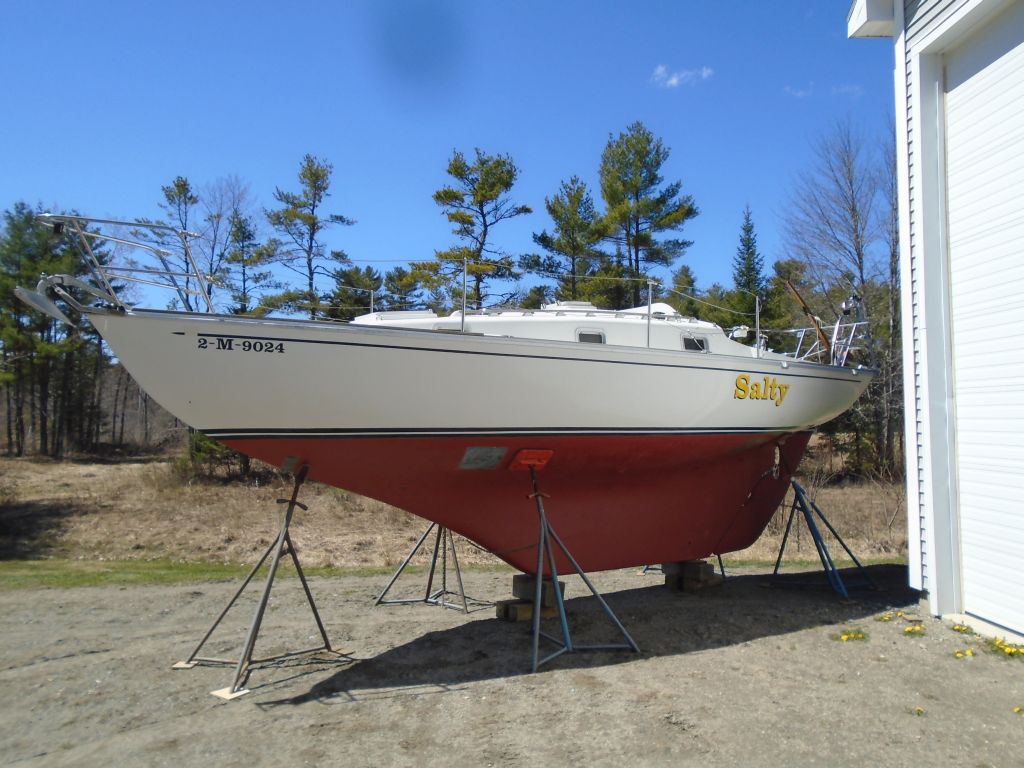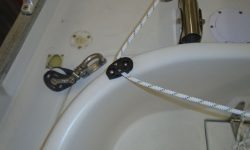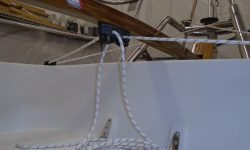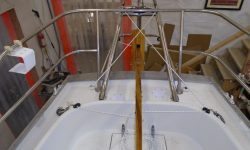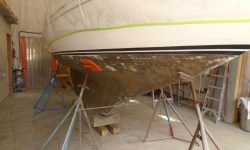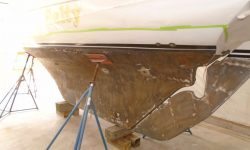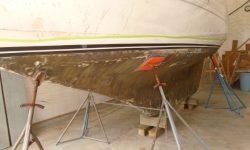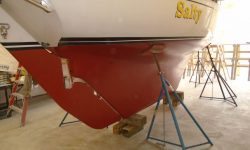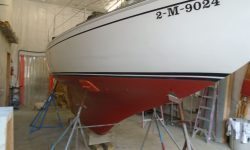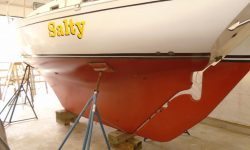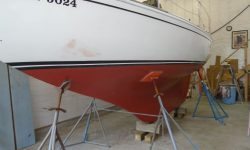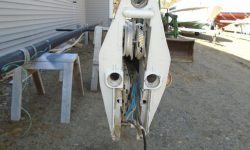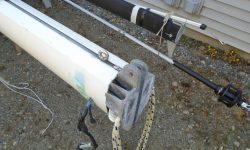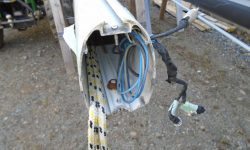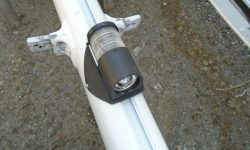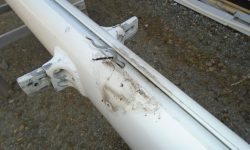April 18, 2016
Salty 42
Monday
To finish up the basics of the Monitor windvane installation, I installed a pair of small cheek blocks on the coaming, locating them near the initial layout marks I’d made, but adjusting as needed to where they made the most sense and the fairest lead to the vane and to the tiller.
The blocks’ positions allowed me to finalize the installation for the two cam cleats on the underside of the tiller. I left the lines long for the owner to fine-tune as he saw fit. Afterwards, I lightly polished the coaming and aft deck to complete the areas I’d not done the last time.
Next on the agenda was the bottom, which required sanding prep before converting to a different type of paint, so I removed the staging for better access and prepared the boat by covering the decks with plastic sheeting to keep dust off and out of the boat. Before beginning further work, I polished the hull right at the waterline so that later I’d not run into the new paint. I’d do the rest of the hull later.
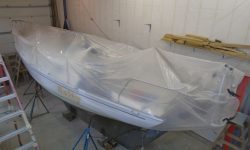
Afterwards, I sanded the bottom to scuff up the surface–the existing was a teflon-based paint that was compatible beneath the new paint the owner chose, but required sanding first. I didn’t attempt to remove the paint, but just scuffed it thoroughly to ensure good adhesion. Once complete, I cleaned up and solvent-washed the bottom.
Next, after masking off I applied two coats of red antifouling paint.
Earlier, I’d determined a requirement for some additional wiring for the mast–I’d need to extend the 5-wire harness for the radar target enhancer (RTE) since the wire provided with the unit was far too short, a shortfall I’d fortunately discovered before it became critical. The owner and I had also discussed VHF antenna placement to avoid interference and physical contact with the RTE, and came up with a plan that would require some additional material as well. So while I waited for the new wire and other material to arrive, I thought I’d see what I was in for with the mast project. I found that both the top and bottom castings of the mast were removable, which greatly helped access within, so that was a plus. Inside the mast, running up at least as high (but possibly not beyond) the steaming/deck light combo at the spreaders, was a plastic conduit containing the old wires.
I’d begin the mast work soon, but for now I just removed the old steaming light, as there was a new replacement on hand.
Total time billed on this job today: 6.25 hours
0600 Weather Observation:
40°, clouds. Forecast for the day: Mostly cloudy, 50s, showers late


